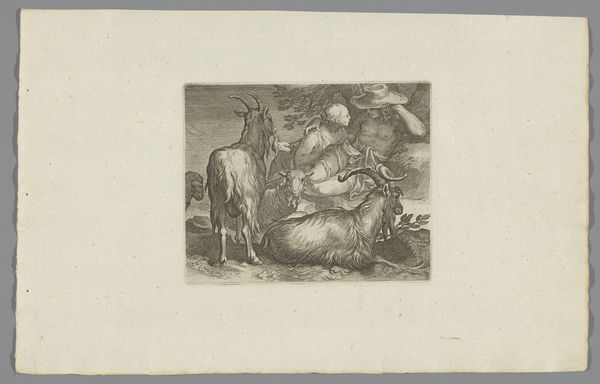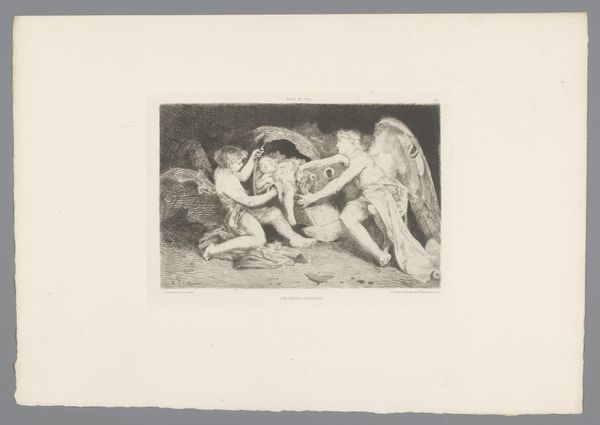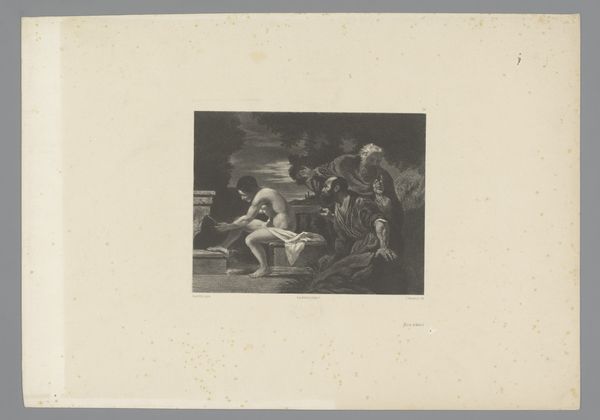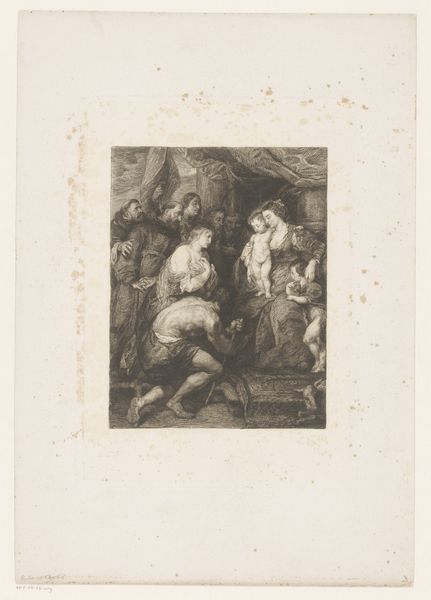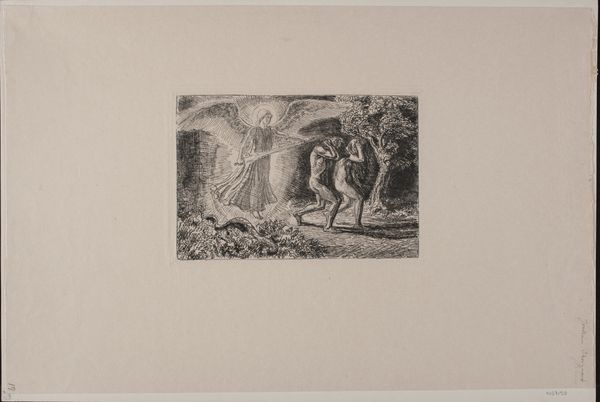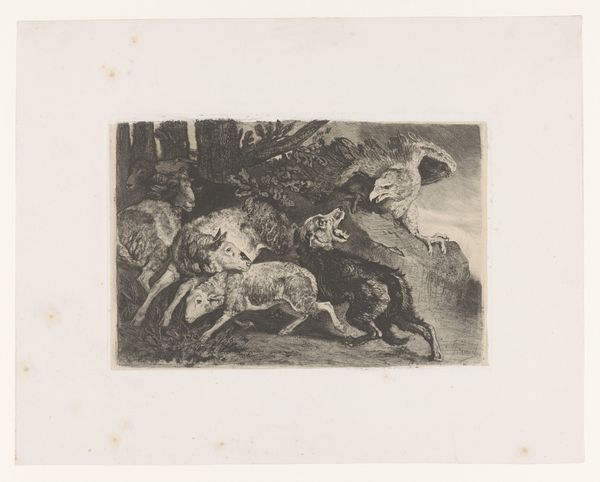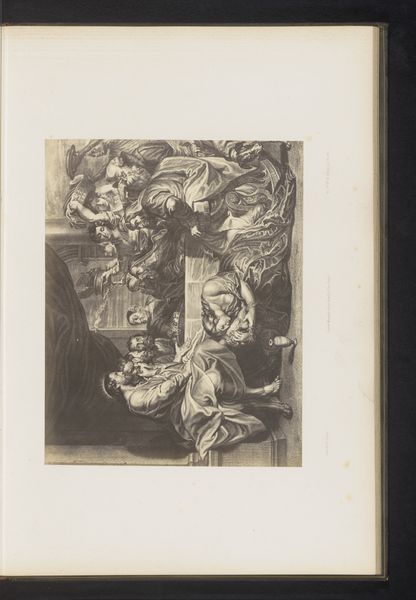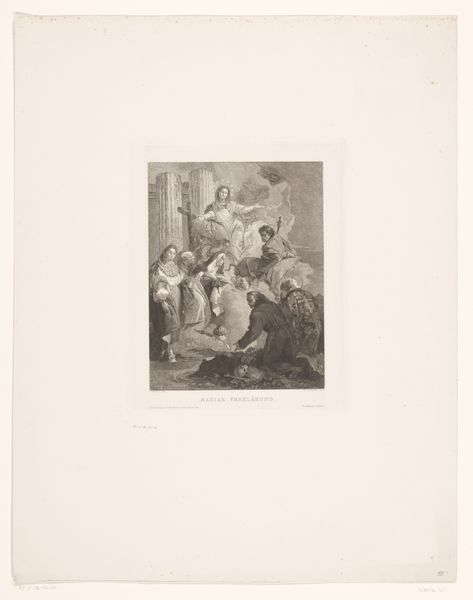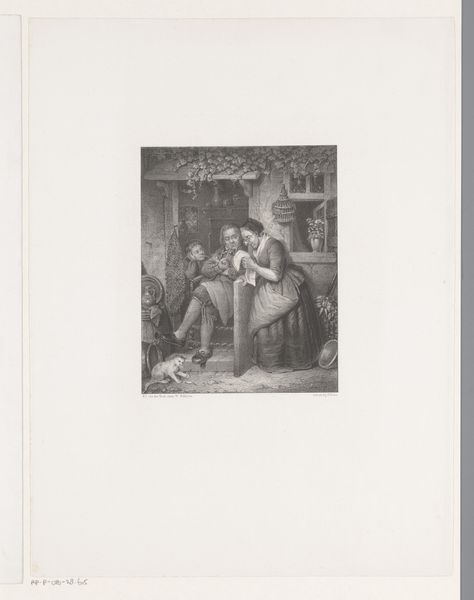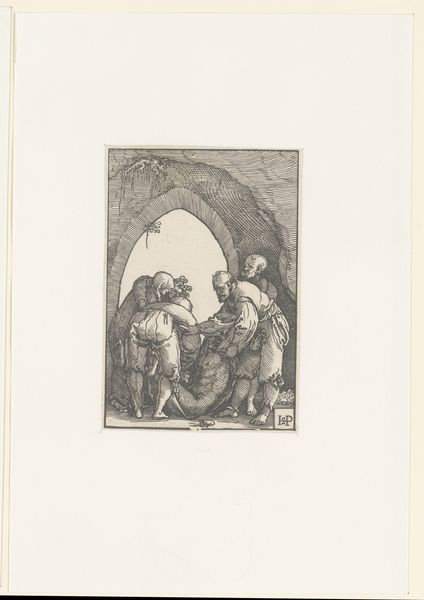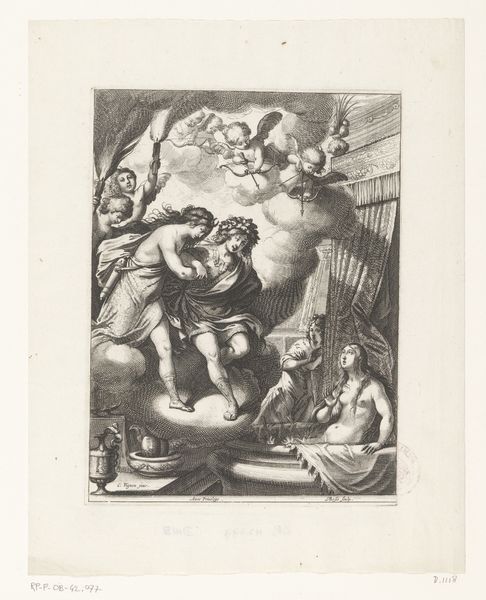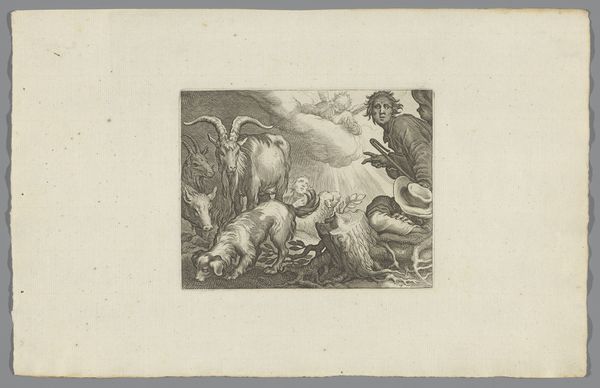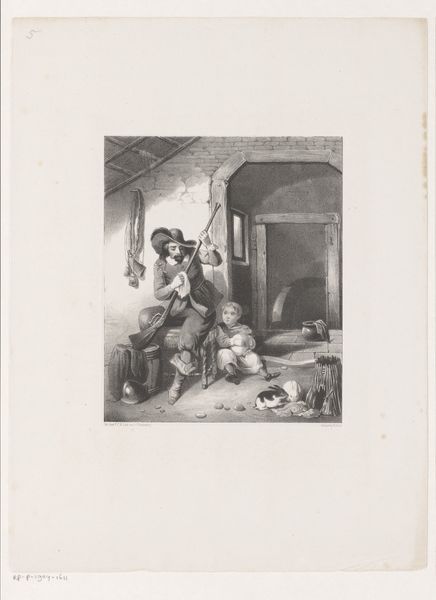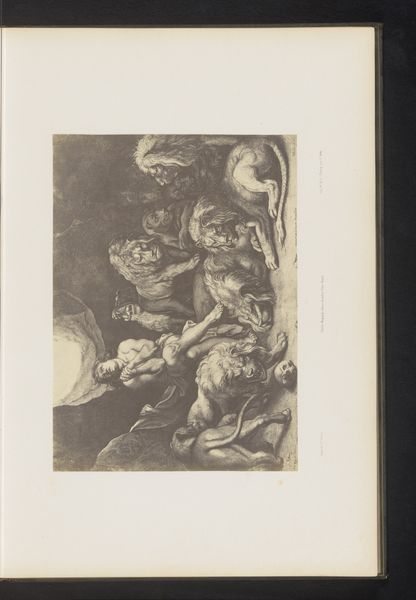
print, etching, engraving
#
portrait
#
narrative-art
# print
#
etching
#
figuration
#
history-painting
#
academic-art
#
engraving
Dimensions: height 239 mm, width 274 mm
Copyright: Rijks Museum: Open Domain
Editor: Here we have Paul Rouffio's "Hérodias met het hoofd van Johannes de Doper," an etching and engraving from 1878. It's quite a chilling image! Herodias' gaze is unsettling. What do you see in this piece, looking at it from a critical perspective? Curator: This work powerfully reflects the intersecting oppressions experienced by women. Herodias, typically vilified as a seductress, can also be seen as a figure navigating a patriarchal society. This image begs the question, who holds the real power here? Is she truly powerful, or is she just enacting a role within a system designed to exploit female agency? How does this resonate with contemporary feminist debates on female complicity and resistance? Editor: That's a really interesting angle! I usually just see her as evil, you know, demanding John the Baptist's head. So you're saying that we can also read it as a woman acting within constraints? Curator: Precisely. Think about the performative aspect. The etching itself highlights this; the staging, the theatricality of the composition. But we must also acknowledge the colonial undertones in the figure holding the platter. The positioning of this Black female figure, almost dehumanized in service to Herodias, unveils uncomfortable truths about power dynamics beyond just gender. What commentary could Rouffio be making, intentionally or otherwise, on class and racial power structures of the time? Editor: That’s a point I completely missed. I was only focusing on Herodias. It feels almost as if the piece is layered with different types of subjugation... Curator: Exactly! The narrative extends beyond a simple morality tale. It provokes us to question not just individual actions but also the social architectures that frame and motivate those actions, doesn't it? Editor: It does. I see it so differently now – I am walking away and seeing this as a layered portrayal of gender, race and power in that historical moment.
Comments
No comments
Be the first to comment and join the conversation on the ultimate creative platform.
